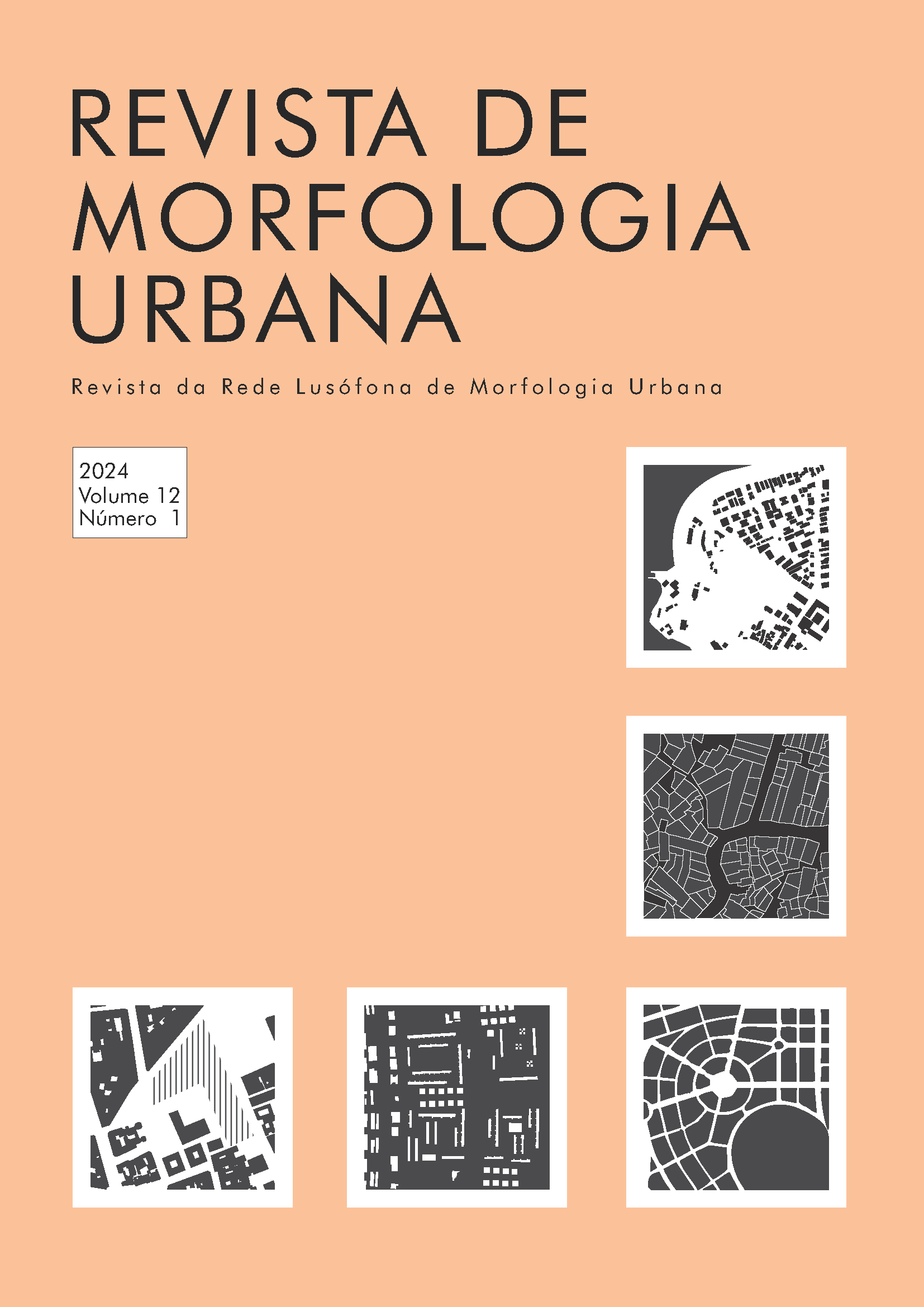Abstract
This work aims to show the relationship between morphology and religious festivals through the use of spatial syntax, highlighting the design of some of the main religious processions in the city of Recife. Urban history shows that Brazilian cities, as well as those in the Northeast, configured their spaces under the influence of the passage of Catholic celebrations. The central idea of the work is to understand how the routes of processions, through the “spaces of choices” produced by passers-by and devotees, can be compatible with the axes of displacement and visibility in the form of lines or rectilinear stretches of streets. Line connections in space syntax are always made between shorter paths, as is the logic of festive routes, signaling a possible rapprochement between the two logics. The sinuous form of the procession, superimposed on the straight lines of the syntax, can also reveal whether there is any topological nexus in the festive route that is, at least, transversal to the elements that are part of the urban form (local and global integration and normalized choice and normalized integration), showing that the Brazilian street has always been a lively space for meetings.
References
Argan, G. C. (2004) Imagem e persuasão: ensaios sobre o barroco. (Companhia das Letras, São Paulo).
Albuquerque, M. (1997) Arraial Novo do Bom Jesus: consolidando um processo, iniciando um futuro. (Editora Graftorre Ltda., Recife).
Benhamou, F. (2007) A economia da cultura. (Ateliê Editorial, Cotia, São Paulo).
Diacov e Covalev. (1965) História da antigüidade: Roma. (Editora Fulgor, São Paulo).
Hillier e Hanson. (1984) The Social Logic of Space. (Cambridge University Press, Cambridge).
Koch, W. (2004) Dicionários dos estilos arquitetônicos. (Martins Fontes, São Paulo).
Kohlsdorf, M. E. (1996) A apreensão da forma da cidade. (ID.UNB, Brasília).
Ledeneva, A (2019) “The informal view of the world”, Global Informality Project. http://www.in- formality.com
Loureiro, C. e Amorim, L. (2000) “O mascate, o bispo, o juiz e os outros: sobre a gênese morfológica do Recife”, R. B. Estudos Urbanos e Regionais. http://dx.doi.org/10.22296/2317-1529.2000n3p19
Martin, G. (1996) Pré-história do Nordeste do Brasil. (Editora Universitária, UFPE, Recife).
Milfont, M. (2013) “O processo de transformação da cidade do Recife através da prática urbana dos percursos festivos”, Revista Brasileira de Estudos Urbanos e Regionais. https://anais.anpur.org.br
Milfont, M. (2010) “A urbanidade no século XVIII: Vila do Recife e Arraial do Tijuco”, Tese de Doutorado, Universidade Federal de Pernambuco, Recife.
Mumford, L. (1998) A cidade na História: suas origens, transformações e perspectivas. (Martins Fontes, São Paulo).
Netto, V. M. (2013) “O que a sintaxe espacial não é?”, Arquitextos, Vitruvius. https://vitruvius.com.br/revistas/read/arquitextos/14.161 /4916
Roque, T. (2012) História da Matemática: uma visão crítica, desfazendo mitos e lendas. (Zahar, Rio de Janeiro).
Teixeira, M. C. (2012) A forma da Cidade de Origem Portuguesa. (Editora UNESP, São Paulo).
Reis, J. J. (2019) Ganhadores: a greve negra de 1857 na Bahia. (Companhia das Letras, São Paulo).
Ilustrações:
Schlappriz, L. e Carls, F. H. (1863) “Vista do Pateo da Penha”, Brasiliana Iconografia, 2017. https://www.brasilianaiconografica.art.br/obras/18543/vista-do-pateo-da-penha-mercado-de-verduras
Reis, N. G. (2000) Imagens de Vilas e Cidades do Brasil Colonial (FUPAM – EDUSP – Imprensa Oficial, São Paulo). CD – ROM.
Rugendas, J. M. (1847). “A Congada religious folk dance in Rio de Janeiro”, Reddit. https://www.reddit.com/media?url=https%3A%2F%2Fi.redd.it%2F40ivkqcdranz.jpg
Rugendas, J. M. (1835). “Festa de Nossa Senhora do Rosário, Patrona dos negros”, Universidade Federal do Paraná. https://docs.ufpr.br/~lgeraldo/upoimagens3.html

This work is licensed under a Creative Commons Attribution 4.0 International License.
Copyright (c) 2024 Magna Lícia Barros Milfont, Rafaella dos Santos Cavalcanti , Circe Maria Gama Monteiro


